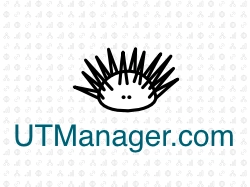TAM is a foundational metric used in strategic planning, market sizing, and investor communications. It helps businesses understand the full potential of their product or service within a clearly defined market. By quantifying the maximum demand, companies can better evaluate opportunities, set realistic growth goals, and make informed decisions about market entry, investment, and product development.
There are three common approaches to calculating TAM:
- Top-Down Approach: Uses third-party research, industry reports, or government data to estimate the size of the total market.
- Example: A market research firm estimates that the global e-learning market is worth $400 billion.
- Bottom-Up Approach: Builds TAM from internal data—starting with pricing and current sales, then extrapolating based on realistic reach and adoption.
- Example: A SaaS company charges $1,000 per year per license and identifies 500,000 potential target companies, giving a TAM of $500 million.
- Value-Theory Approach: Estimates TAM based on the value a product provides and the price customers would be willing to pay, often used for innovative or emerging markets.
- Example: A new AI tool could save companies $1M annually; if companies are willing to pay 10% of that value, the TAM is calculated based on that pricing model.
Why TAM matters:
- Strategic Planning: Helps determine whether a market is big enough to support ambitious growth goals.
- Prioritization: Guides decisions about which products, features, or markets to focus on first.
- Investor Communication: A large, well-defined TAM is often key to attracting funding, especially for startups.
- Competitive Benchmarking: Provides context for evaluating current market share (SOM) and served available market (SAM).
- Forecasting Potential: TAM helps set realistic revenue expectations over the long term.
Example: A company developing telehealth software calculates its TAM by identifying all licensed medical providers in the U.S. (800,000) and estimating that each could generate $1,000 in annual revenue. This results in a TAM of $800 million. While the company can’t realistically capture the entire TAM, understanding the size of the opportunity helps it prioritize marketing efforts, plan expansion, and communicate its potential to investors.
Best practices for calculating TAM:
- Clearly define the market: Be explicit about the target segment, geography, and use case.
- Use multiple methods: Cross-check top-down data with bottom-up calculations for accuracy.
- Segment where appropriate: Breaking TAM down by region, vertical, or customer type often reveals more actionable insights.
- Stay current: Markets evolve quickly—revisit TAM estimates regularly to reflect new trends or competitors.
- Avoid overinflating: Investors and stakeholders look for credible, data-driven calculations—not unrealistic “everyone’s our customer” claims.
Pro Tip: TAM is theoretical—few companies ever capture 100% of their TAM. The real strategic power comes from comparing TAM with SAM (Served Available Market) and SOM (Share of Market) to assess actual market positioning and growth opportunities.
